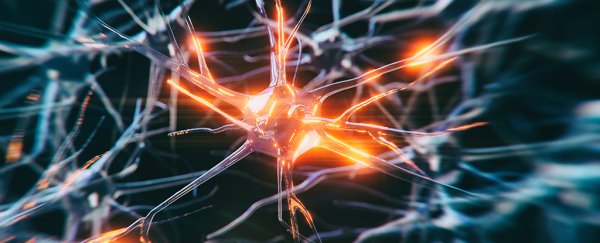Stimulating a key part of the brain using light helps Alzheimer's patients sleep better and improves their psycho-behavioral symptoms, according to a review of studies involving nearly 600 people with the disease.
Based on the minimal side effects observed, the research team from China's Weifang Medical University suggests this could be a viable, non-drug treatment option.
The team conducted a meta-analysis of 15 trials testing how light therapy, or photobiomodulation (PBM), impacts symptoms of cognitive decline.
PBM uses light to stimulate the suprachiasmatic nucleus (SCN), a region of the brain involved in regulating sleep which has also been linked to aspects of Alzheimer's. The therapy showed promise in alleviating some of the disease's symptoms, including apathy, depression, agitation, and aggression.
In their published paper, the researchers note that although Alzheimer's disease primarily affects cognitive function, people with the disease also frequently experience sleep problems and psychobehavioral symptoms.
These can include "apathetic and depressive behavior as well as agitated behavior characterized by exaggerated motor activity and verbal and/or physical aggression," the researchers write.
"Sleep disorders are common in Alzheimer's disease, with 70 percent of patients experiencing sleep disruption in the early stages."
Nine out of ten people with Alzheimer's disease will experience one or more of these psychobehavioral symptoms.
The researchers note that patients with Alzheimer's disease often have less exposure to light by spending less time outside, and can have reduced light sensitivity due to nerve damage, reduced social interaction and age-related eye problems. Reduced light exposure can wreak havoc on the body's circadian rhythms.
Light therapy essentially involves the patient being exposed to bright light that mimics the Sun's illumination, at a brightness up to 10,000 lux for approximately half an hour. Retinal receptors convey light information to the SCN in the hypothalamus, which coordinates our circadian rhythm – a natural 24-hour 'clock'.
Light therapy has been used to treat depression, particularly in those with seasonal affective disorder.
While light therapy for Alzheimer's disease has been gaining attention, the authors say that comprehensive research on its efficacy and safety is still lacking.
Their analysis included 15 randomized controlled trials on light therapy for Alzheimer's disease or dementia, carried out in seven different countries between 2005 and 2022. Most of the 598 patients – aged between 60 to 85 years – had mild to moderate dementia.
"Overall, the results revealed that light therapy helped to alleviate sleep efficiency, sleep quality, depressed mood, caregiver burden, and agitated behavior," the team writes.
However, the light therapy interventions in this study involved a variety of technologies using a wide range of wavelengths and timings.
The researchers also emphasize the studies included in the meta-analysis had small sample sizes, and inconsistencies in patient populations, dementia types and severity. The randomization of some included studies was unclear too, suggesting potential bias.
"The current pharmacological treatments can only reduce clinical symptoms to a certain extent; however, they cannot stop or reverse the pathological process," the authors write.
"Further, Alzheimer's medication carries side effects such as diarrhea, muscle cramps, weakness, nausea, vomiting, and insomnia, notably reducing patient compliance with such drugs."
So finding other ways to treat the symptoms is valuable, though there may be adverse outcomes due to bright light exposure that we don't yet know about.
The study highlights the use of light therapy as a possible treatment option for Alzheimer's symptoms, the team concludes, and calls for further, larger trials to confirm its efficacy and safety.
The study has been published in PLOS ONE.
